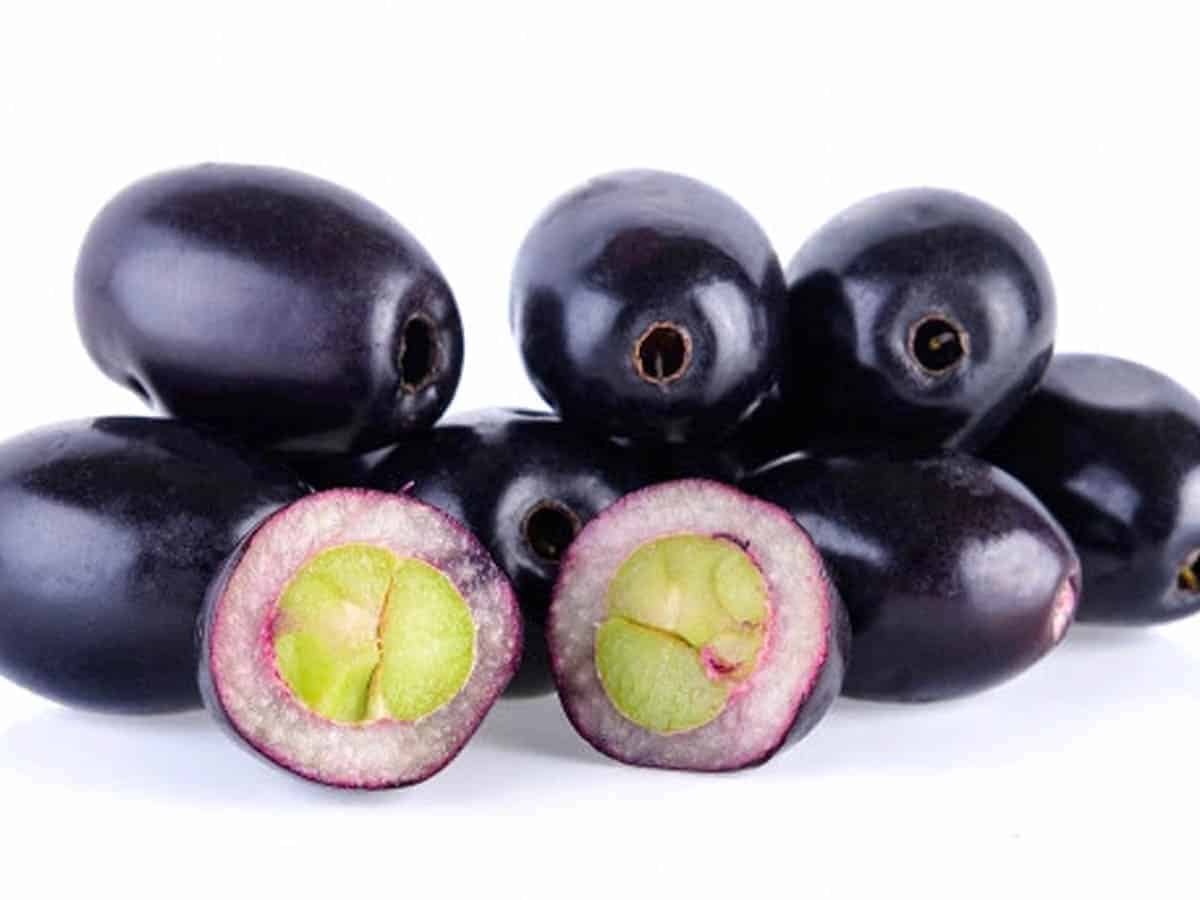
It is Jamun time in Hyderabad, though a bit early, but then reasons best known to nature so many things seem to be happening before time or before the season.
Jamun, the lush blue-black juicy berry-like fruit usually is available in the market around the start of monsoons, has arrived earlier than usual, fruit sellers say these berries are from Bangalore. They also say that Jamun grown in Northern India is bigger in size with a big stone, but are not available here.
Thought to be possessing healing qualities for several ailments, including diabetes and a good source for iron and vitamin C, Jamun is sold from Rs 500/ to 600/ per Kilogram, while once upon a time one could get a kilo of the berries for just rs 10/. And much to the delight of youngsters and freeloaders, the berries would come free from the many Jamun trees found in the compounds of government offices and public places in the city.
All one had to do was shake the fruit-laden reachable branches and the juicy berries would rain down. Those times and days are gone as many open yards and huge compounds of villas and mansions have been turned into high-rises felling the flora.
It is said that Mughal emperor Jehangir a connoisseur of his times for all things fine, especially the food was very fond of Jamuns and enjoyed them as he would grapes and apricots from Bukhara. The palace golden fruit bowls would be full of Jamuns of the finest quality.
Jamun has a place of pride in the Ayurvedic and Unani medicines, recommended for the treatment for heatstrokes and its stone pounded into fine powder for diabetes. The fruit is also used in the making of vinegar, which is considered to be the top class. Ayurveda practitioners say that in some orthodox homes especially in North India only Jamun “sirka” vinegar is used.
Reaping Jamun berries is so different from reaping other fruits. It calls for expert Jamun “spotters”, who climb up the tree and shake the berry-laden branches laying a large sheet of thick cloth under the tree to prevent the fruit from getting damaged as it falls.
The Jamun tree like the Sitaphal (Custard Apple) plant was once found in plenty in the city and its suburbs, driving down to the outskirts of the city one would find lines of Jamun trees and Sitaphal plants. Perhaps road widening has taken all that away.

